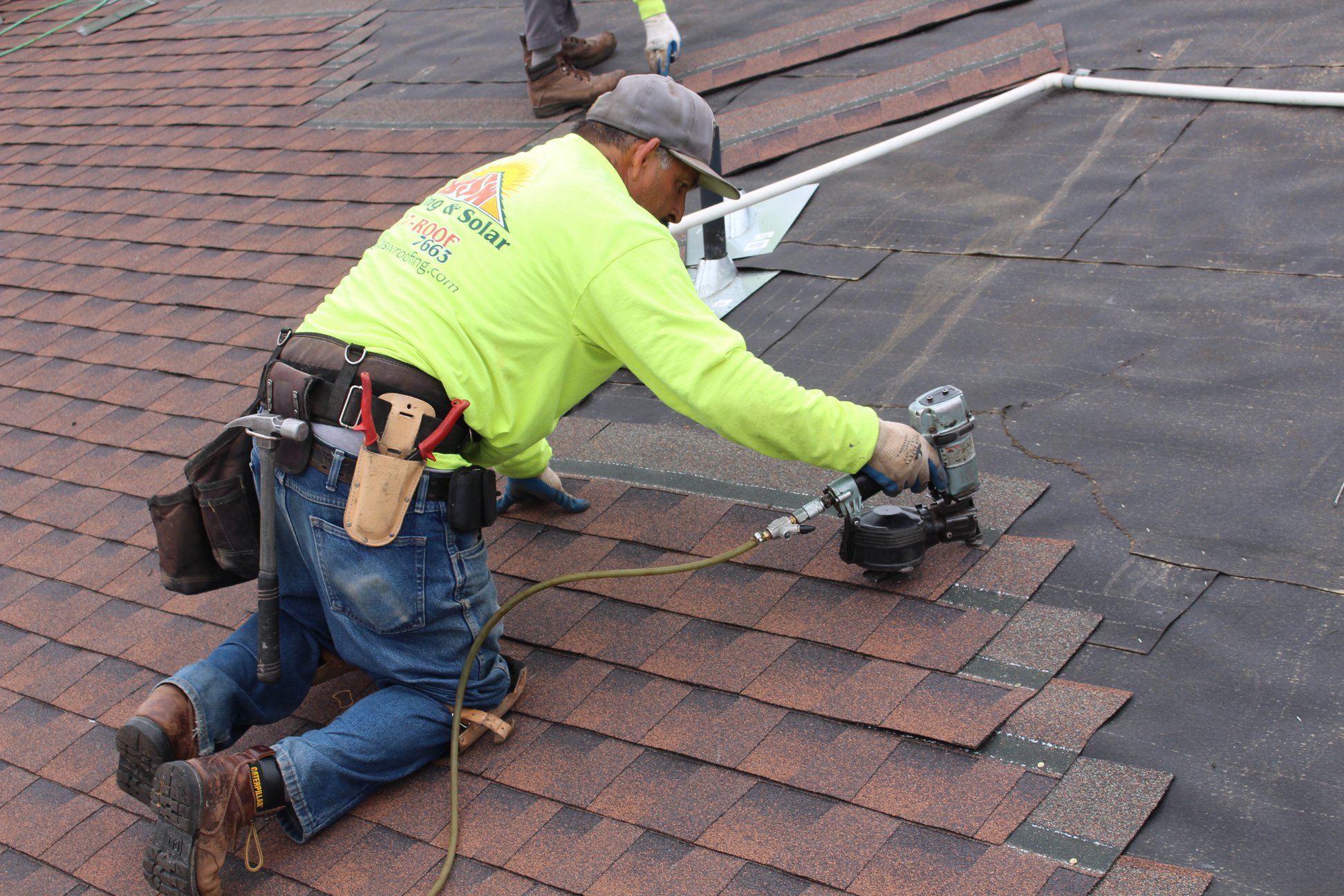Ideal Practices for Ensuring Correct Roof Covering Ventilation
Making certain correct roofing air flow is critical for the durability and effectiveness of a roof. A balanced intake and exhaust vent ratio, frequently 1:300, plays a critical function, with consumption vents ideally placed at the lower edge of the roof for awesome air entrance and exhaust vents at the peak for cozy air exit. Routine inspections to identify obstructions and keep clear air movement are paramount. In addition, keeping insulation far from vents is vital to avoid air flow limitation. Comprehending these foundational components sets the stage for even more in-depth insights right into installation and upkeep techniques that can considerably enhance your roof's efficiency.
Understand Ventilation Essentials
Properly understanding ventilation fundamentals is essential for guaranteeing the durability and efficiency of roof. Reliable air flow mitigates moisture accumulation and temperature extremes in the attic room, both of which can result in substantial structural damage with time. A well-ventilated roofing aids in preventing usual concerns such as mold and mildew development, wood rot, and ice dams, which can jeopardize the honesty of the roofing materials and the underlying structures.
The key goal of ventilation is to help with the activity of air, permitting a regular exchange between the outside and indoor settings. This equilibrium is achieved through a combination of consumption and exhaust vents that function with each other to preserve optimum air movement. Consumption vents, commonly located along the eaves or soffits, allow fresh air to get in the attic room room, while exhaust vents, frequently situated at or near the roof ridge, make it possible for warm, moist air to get away.
Trick variables affecting the efficiency of roofing ventilation include appropriate positioning, sufficient sizing, and guaranteeing that both consumption and exhaust vents are unblocked. Normal inspection and upkeep are vital to determine prospective blockages, damages, or inadequacies in the air flow system, thereby protecting the roofing's performance and durability.
Types of Roof Vents
Roof vents play an important duty in maintaining efficient attic ventilation and, by expansion, the overall wellness of the roofing system. Different kinds of roofing vents are available, each with distinct advantages tailored to particular roof covering demands.

Soffit vents are mounted under the eaves and work in tandem with roofing system vents to guarantee a well balanced intake and exhaust system. By allowing cooler air to enter from below, soffit vents assist in the expulsion of warm air through upper vents. Gable vents, located on the outside wall surfaces of the attic room, offer another efficient service, specifically in homes with gable roofing systems.
Evaluate Your Current Air Flow

Next, take into consideration the age and problem of your roofing products and ventilation components. Older systems might not conform with existing building ordinance or may have deteriorated with time, reducing their performance. Conduct a detailed exam to recognize any type of indicators of deterioration, such as corrosion, damage, or spaces that could visit our website jeopardize the system's efficiency.
Additionally, determine the attic room temperature level and humidity degrees. High temperature levels and try here moisture can indicate insufficient air flow - roofing companies in gainesville florida. Utilize a hygrometer and thermostat to obtain exact analyses, comparing them with outside problems. Relentless discrepancies recommend potential problems that require attending to.
Installation Best Practices
Efficient installment of roof covering air flow systems is critical for guaranteeing ideal efficiency and durability. Correct setup starts with understanding the details air flow demands of the structure and the roof covering it covers. This involves computing the correct ratio of consumption to tire vents, typically adhering to the 1:300 guideline, which states one square foot of air flow for every 300 square feet of attic flooring space.

Consumption vents ought to be mounted at the roof's reduced side, typically in the soffits, to permit awesome air to get in. Exhaust vents, on the other hand, must be installed near or at the roofing system's peak to assist in the leave of warm, damp air.
Seal all vent connections diligently to avoid air leakages and prospective water seepage. Use high-quality products and adhere to maker guidelines to make sure toughness and efficiency. In addition, incorporating ridge vents with baffles can considerably enhance airflow effectiveness by preventing wind-driven rainfall and snow from entering the attic.
Eventually, exact installation of roofing ventilation systems alleviates prospective problems such as mold growth, ice dams, and architectural damage, making sure the roofing's stability and the structure's overall health.
Regular Maintenance Tips
Consistency in maintenance techniques is basic to making sure the long-lasting efficiency of roofing air flow systems. Regular evaluations are crucial, preferably performed biannually-- in the spring and autumn. During these evaluations, make certain that vents are without debris, nests, and other blockages that can restrain air flow. Look for any kind of signs of dampness build-up or mold and mildew, as these can indicate inappropriate ventilation or leaks (gainesville fl roofing companies).
Cleaning the vents is one more important job. Utilize a soft brush or a vacuum cleaner to remove dirt and debris from intake and exhaust vents. Beware not to damage the air vent screens or louvers throughout the process. In addition, inspect the attic area for any kind of indications of water damage, which visit site could endanger the integrity of the roof system.
Correct insulation is similarly vital. Guarantee that attic room insulation does not block the vents, as this can significantly limit airflow. If any kind of insulation has actually shifted or cleared up, rearrange or replace it to maintain a reliable barrier.
Lastly, replace any type of harmed or missing out on elements quickly. Busted vents, cracked roof shingles, or shabby flashing can all contribute to inadequate air flow and ought to be attended to right away. Normal maintenance ensures that the roofing ventilation system works optimally, thus prolonging the life expectancy of the roof covering itself.
Verdict
Making sure proper roof covering ventilation is vital for keeping the efficiency and longevity of a roof system. Adherence to the 1:300 consumption and exhaust vent proportion, combined with the strategic positioning of vents, is vital.
A balanced intake and exhaust air vent proportion, commonly 1:300, plays a pivotal duty, with intake vents ideally placed at the reduced side of the roofing system for trendy air access and exhaust vents at the top for cozy air exit. Intake vents, typically situated along the eaves or soffits, enable fresh air to go into the attic room, while exhaust vents, often located at or near the roofing ridge, make it possible for warm, humid air to leave.
Soffit vents are installed under the eaves and work in tandem with roof vents to ensure a balanced consumption and exhaust system. By permitting cooler air to get in from below, soffit vents promote the expulsion of hot air through upper vents. Adherence to the 1:300 consumption and exhaust vent ratio, coupled with the tactical placement of vents, is crucial.